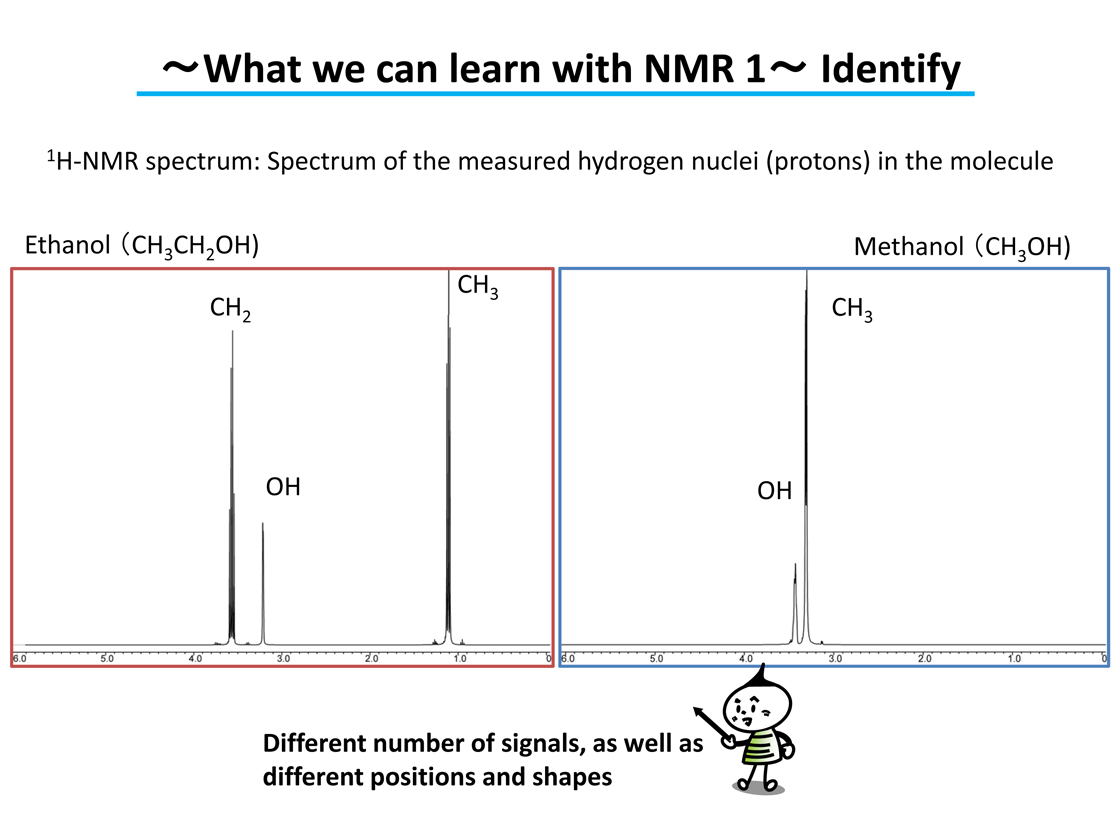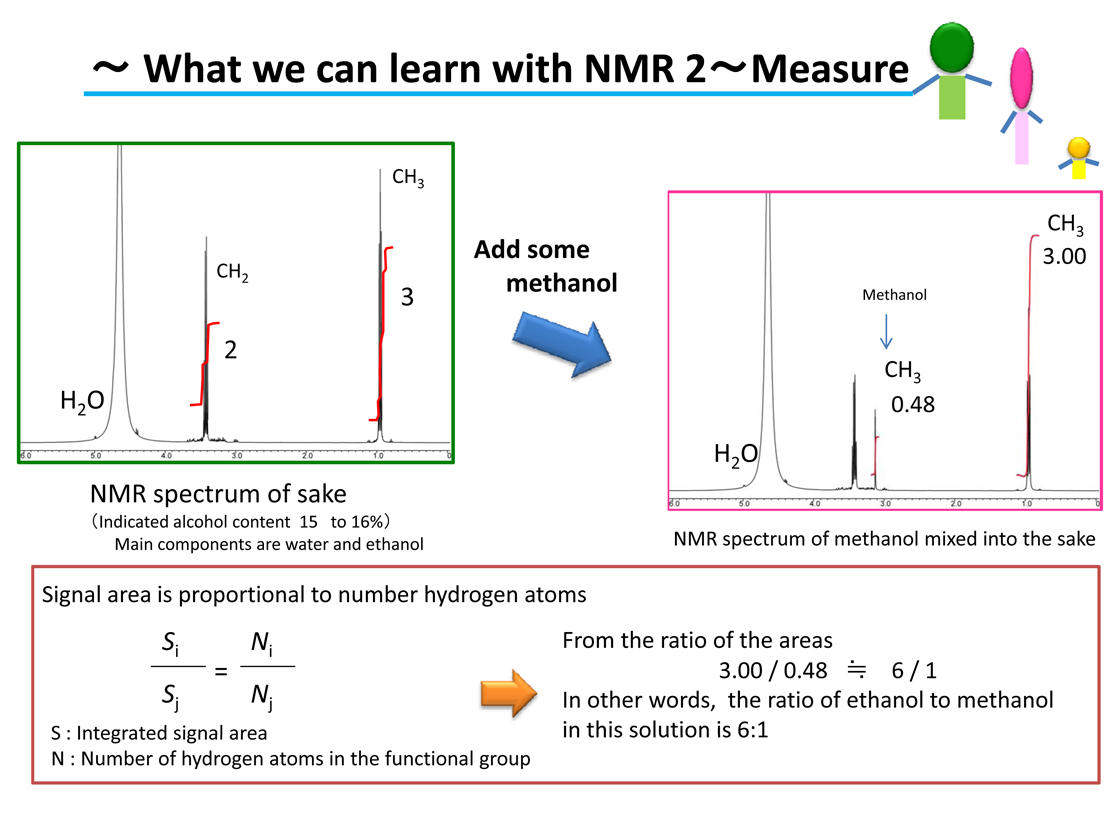Welcome! Quick Introduction to Quantitative NMR
Issue 1
Quantitative NMR is a method of quantitative analysis using nuclear magnetic resonance (NMR).
It is called qNMR. Usually, chromatography is regarded as the typical way to perform quantitative analysis. NMR analysis has a quantitative performance in principle, but compared to chromatography, NMR seems to have the image of being “Big, Expensive, Low-sensitivity, and Complicated”
Nevertheless, NMR has been attracting a lot of attention in a variety of fields as the key to improving the reliability of quantitative analysis results. For example, the Japanese Pharmacopoeia has adopted qNMR as a method for purity determination of standard reference materials for chromatography. This improves the reliability of quantitative results of marker compounds in chromatographic analysis.
What we can do with NMR
NMR enables the observation of specific nuclei, and we can obtain a variety of information about the analyte. he hydrogen nuclei (1H: proton) in molecules is widely used for qualitative analysis. This is called 1H-NMR. Let’s compare the 1H-NMR spectra of ethanol and methanol. It is possible to obtain a separate signal for each functional group. The positions and shapes of the detected signals are all different. In addition, the intensity of the signals is proportional to the number of protons. As a result, from the NMR spectrum you can identify as well as measure the compounds that you analyze, so it is both qualitative and quantitative analysis.

1H-NMR measurements of sake were performed. The main component of sake is water, and from the spectrum we can see that there is also ethanol. So, what happens when we add a little methanol into the sample?
Since the position of the signal detected for methanol is different from the detection position for ethanol, when the methanol is added, we can immediately see that there is something else in the sample. Furthermore, by comparing the areas of the signals for the CH3 group in the ethanol and methanol, we can determine he ratio of ethanol to methanol that is present.
In this way, it is possible to obtain both intramolecular, and intermolecular quantitative information using NMR.

Are you a medical professional or personnel engaged in medical care?
No
Please be reminded that these pages are not intended to provide the general public with information about the products.
